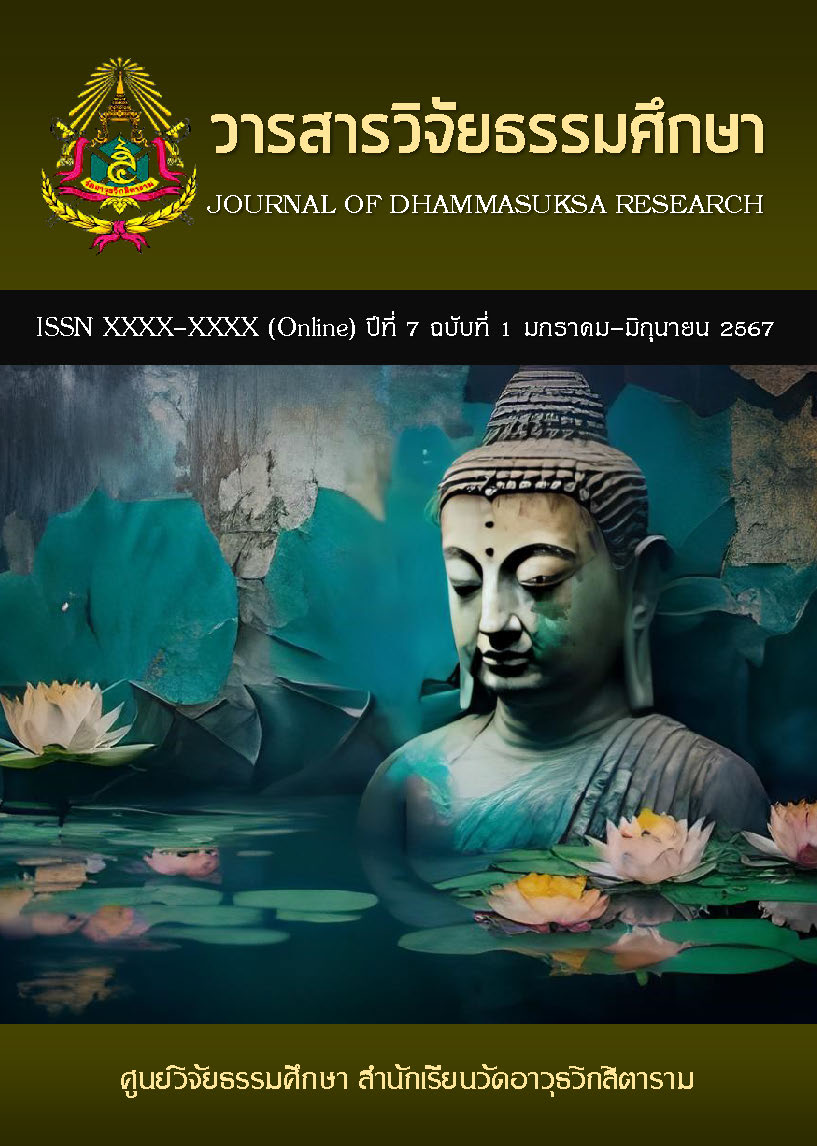DIRECTING OF ADMINISTRATORS AFFECTING THE EFFECTIVENESS OF SCHOOL UNDER NAKHON PATHOM PRIMARY EDUCATIONAL SERVICE AREA 2
Keywords:
administration, management, effectivenessAbstract
This research aimed to study 1) Study the management of executives Under the Office of Nakhon Pathom Primary Education Service Area 2. 2) Study the effectiveness of the school. Under the Office of Nakhon Pathom Primary Education Service Area 2 and 3) to study the administration of administrators that affect school effectiveness. Under the Office of Nakhon Pathom Primary Education Service Area 2. The sample group of informants consisted of 1) school administrators, 2) department heads, and 3) teachers, totaling 328 people. The research tool was a questionnaire on management administration and school effectiveness Data analysis using a packaged program Statistics used in data analysis were frequency, percentage, arithmatic mean standard deviation and hypothesis testing Stepwise multiple regression analysis was used.
1. The management of administrators under the Office of Nakhon Pathom Primary Educational Service Area Office 2 was at a high level overall, and each aspect was at a high and moderate level, ranked from descending to descending as follows: Communication, Leadership and Motivation, respectively.
2. School effectiveness Under the Office of Nakhon Pathom Primary Educational Service Area 2, the overall level was at a high level. When considering each aspect, it was at the highest and highest level. In descending order: the ability to develop students to have a positive attitude, the ability to solve problems within the school, the ability to change and educational institution development, and in terms of the ability to produce students with academic achievement, respectively.
3. Administrative directives affecting school effectiveness Under the Office of Nakhon Pathom Elementary Educational Service Area 2 overall, there was a statistical significance at the .01 level, able to predict school effectiveness. under the Office of Nakhon Pathom Primary Education Service Area 2 at 84.6 percent.
References
จริญญา ดวงเกิด. (2556). ปัจจัยที่ส่งผลต่อการตัดสินใจเลือกเข้าศึกษาในมหาวิทยาลัยพะเยา. สารนิพนธ์ ปริญญารัฐประศาสนศาสตรมหาบัณฑิต สาขาวิชานโยบายสาธารณะ บัณฑิตวิทยาลัย มหาวิทยาลัยพะเยา.
กระทรวงศึกษาธิการ. (2545). พระราชบัญญัติการศึกษาแหงชาติ พุทธศักราช 2542 และแกไขเพิ่มเติม (ฉบับที่ 2) พุทธศักราช 2545. สำนักงานปลัดกระทรวงศึกษาธิการ.
กนกอร ยศไพบูลย์. (2546). ภาวะผู้นำทางการศึกษา. ภาควิชาการบริหารการศึกษา คณะศึกษาศาสตร มหาวิทยาลัยขอนแก่น.
นงนุช วงษ์สุวรรณ. (2544). การบริหารทรัพยากรมนุษย์, จันทบุรี: สถาบันราชภัฏรำไพพรรณี.
บรรยงค์ โตจินดา. (2542). องค์การและการจัดการ. กรุงเทพฯ: อมรการพิมพ์.
บรรยงค์ โตจินดา. (2550). การบริหารงานบุคคล. กรุงเทพฯ: อมรการพิมพ์.
บุญชม ศรีสะอาด. (2556). วิธีการทางสถิติสาหรับการวิจัย เล่ม 1 (พิมพ์ครั้งที่ 5). กรุงทพฯ: สุวีริยาสาส์น.
พัธรา นักรำ. (2550). กลยุทธ์การสื่อสารที่ใช้ในการบริหารการเปลี่ยนแปลงของธนาคารไทยพาณิชย์ จำกัด (มหาชน). วิทยานิพนธ์นิเทศศาสตรมหาบัณฑิต สาขาวิชาประชาสัมพันธ์, จุฬาลงกรณ์มหาวิทยาลัย.
รักเกียรติ หงส์ทอง. (2559). ภาวะผู้นำเชิงวิสัยทัศน์ในบริบทการนำการเปลี่ยนแปลง. วารสารมนุษยสังคม ปริทัศน์, 18(2)
วิโรจน์ สารรัตนะ. (2548). ผู้บริหารโรงเรียน: สามมิติการพัฒนาวิชาชีพสู่ความเป็นผู้บริหารที่มีประสิทธิภาพ. กรุงเทพฯ: ทิพย์วิสุทธิ์.
สำนักงานคณะกรรมการการศึกษาขนพนฐาน. (2548). การศึกษาความคิดเห็นของผู้บริหารเกี่ยวกับแนวโน้มการจัดการศึกษาที่มีประสิทธิภาพตามหลักสูตรการศึกษา ขั้นพื้นฐาน พ.ศ. 2544. รายงานการวิจัย. กรุงเทพฯ: ร.ส.พ.
Krejcie, R. V. & Morgan, D. W. (1970). Determining Sample Size for Research Activities. Educational and Psychological Measurement, 30(3).
McCurtain, B. L. (1989). Elementary school principle competencies and school Effectiveness instructional staff perception. Dissertation Abstracts International,18(1).
Additional Files
Published
How to Cite
Issue
Section
Categories
License
Copyright (c) 2024 Journal of Dhammasuksa Research

This work is licensed under a Creative Commons Attribution-NonCommercial-NoDerivatives 4.0 International License.


